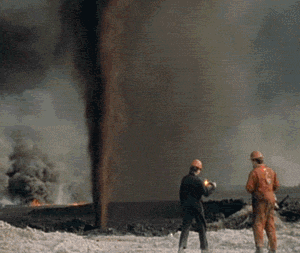
The physical cycles regulating elemental resources in our global ecosystem serve as an abstract representation of mechanisms regulating resources in social systems like Steemit.
Examining the major components of each cycle I will begin by highlighting comparisons to the economy here on Steemit. Once the metaphor has been firmly established the reader can continue mentally highlighting the analogous Steemit components.

Most of the CO2 Steem produced by cellular respiration Powering Down is released directly into the atmosphere Market in terrestrial ecosystems.
The amount of CO2 Steem in the atmosphere Market is fairly low, however; CO2 is only about 0.03% (300 ppm) of the atmosphere. At the same time, the demand for CO2 is very high and by one estimate, photosynthetic organisms in terrestrial ecosystems remove 1/7th of all CO2 in the atmosphere each year.

The low amount of CO2 Steem in the atmosphere raises two important points about the global carbon cycle.
- First, a lot of carbon
Steemis tied up in organismsUser's Steem Powerat any one point in time most terrestrial carbon is found inside living systems, not outsideon the market. - Second, the amount of CO2 removed from the atmosphere
Powered UPis normally approximately counterbalanced by the amount returned through respiration.

This equilibrium maintains the normal level Stable Price of CO2 in the atmosphere.
The tapping of a major terrestrial reservoir of carbon, however, is starting to disturb this equilibrium Stable Price. Over geological time, a large amount of carbon has become locked away as fossil fuels, such as oil, natural gas, and coal. Fossil fuels are the undecomposed bodies of plants and animals that became buried before the carbon in them could be oxidized by decomposers.

The planet’s fossil fuel reservoir @steemit represents a substantial amount of carbon as much as 2.5 to 5 times the amount of carbon in the rest of the global carbon cycle.
The majority of fossil fuels were deposited 360 to 285 million years ago, during the Carboniferous Early 2016 period. When a tree or other organism dies, its body is normally broken down by decomposers. Much of the carbon in trees, in particular, is found in compounds called lignins, which are extremely stable and hard to break down. In modern biological communities, Basidiomycete mushrooms are the primary lignin decomposers, but they do not appear in the fossil record until 60 million years after the rise of the first great forests on land, allowing the deposition of large amounts of carbon materials before that time.

In the last several hundred years beta phase things have changed.
Humans have developed ways to use the energy stored in fossil fuels to power industry, produce electricity, run automobiles, and so forth. As a consequence, increasing amounts of CO2 have been released into the atmosphere, resulting in an increase in the concentration of global atmospheric CO2.

The oceans Whales and Dolphins are another reservoir of inorganic carbon. The amount of carbon Steem in oceans is much larger than the amount in the atmosphere Market as much as 50 times more.
Oceanic carbon is linked to the atmosphere by diffusion from the ocean surface. In aquatic food webs, carbon also becomes incorporated in shells and other hard parts, which sink when shelled organisms die, becoming buried in sediments.

Inorganic nitrogen is another key nutrient stored in the atmosphere.
Nitrogen is a key element in nucleic acids and proteins, and the amount of nitrogen available in an ecosystem can determine the productivity of that ecosystem. Eighty percent of the atmosphere is nitrogen, but it is in the form of N2 (nitrogen gas). N2 cannot be assimilated by plants; it must be converted to nitrate (NO3-) or ammonium (NH4+) to be incorporated into biological systems. The majority of the nitrogen that enters biological systems does so through the action of certain kinds of bacteria that can fix nitrogen. Most nitrogen-fixing bacteria live in soils or in water, though some live in the roots of plants.

Once nitrogen enters an ecosystem, it can cycle in and out of living systems without being returned to the atmosphere as N2.
Organisms excrete nitrogen back into the soil, or when they die, their nitrogen is returned to the soil by decomposers through the process of ammonification. Organic forms of nitrogen in the soil may be reassimilated by plants. In this way, the majority of nitrogen in most ecosystems comes from local recycling of nitrogenous compounds in the soil, not atmospheric nitrogen. Nitrogenous compounds are gradually lost from ecosystems, however, by denitrifying bacteria that convert nitrates to inorganic N2 which returns to the atmosphere; thus, exchanges of nitrogen between the soil and atmosphere are important over the long term.

Like nitrogen, phosphorus can determine the productivity of an ecosystem.
Phosphorus is another essential element, found in nucleic acids, ATP, and the phospholipids that make up cell membranes. The phosphorus cycle, at first glance, is simpler than the carbon and nitrogen cycles, partly because phosphate (PO4 3-), the inorganic form of phosphorus, can be directly assimilated by the primary producers in an ecosystem. Thus, in contrast with both the carbon cycle and nitrogen cycle, living systems do not require any form of biological fixation to incorporate phosphorus. In addition, phosphorus does not occur in a gaseous form and does not appear to have an atmospheric component.

The majority of the phosphorus cycle is local;
plants assimilate phosphate from the soil, which then enters the rest of the ecosystem when these plants are eaten. Phosphorus is lost from the ecosystem largely by leaching, in which water moving through the soil carries away the phosphate in it. This leached phosphate typically ends up in aquatic ecosystems, where it settles out into sedimentary rock over geological time. Phosphate leaving an ecosystem is replaced by new phosphate that enters from the erosion of rocks, so the phosphorus cycle is really two cycles that differ largely in their time scales. Phosphate is assimilated by plants and returned to the soil over ecological time scales, but it cycles in and out of rocks on a geological time scale.

Recent evidence suggests that there is a short-term global cycle for phosphorus, as well.
For example, the productivity of the Amazon rainforest depends critically on adequate levels of phosphorus, but there is relatively little phosphorus available in the Amazon basin. Tropical rainforest soils are notoriously nutrient-poor, and phosphorus regularly leaches through the Amazon River system into the southern Atlantic. Still, the Amazon rainforest is one of the most productive ecosystems in the world—it appears that up to 20 million tons of phosphorus are carried to the Amazon from the Sahara desert each year in the upper atmosphere via the trade winds.

Energy flows through the biosphere, while resources are recycled; understanding these movements enables a more accurate explanation of the abundance and distribution of different species. Even this information, however, allows only very general predictions about the composition and structure of biological communities in different places on Earth.
Sources: 1
Image Sources giphy
#life #resources #metaphor #mind-blown